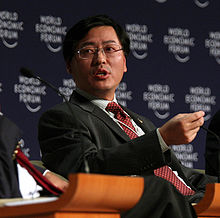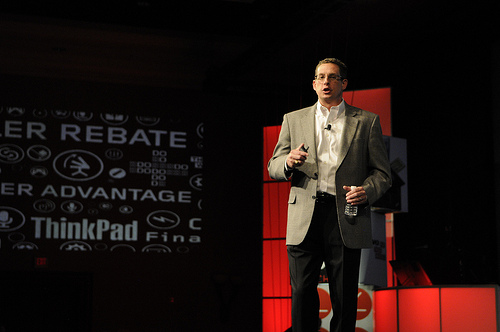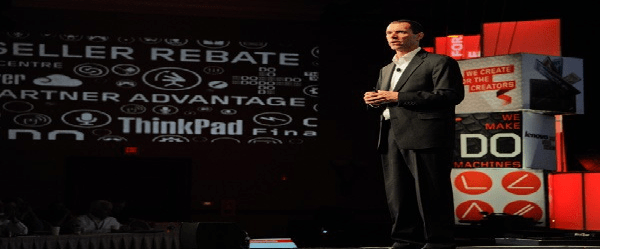Chinese computer company Lenovo Group Ltd., is easing into the third spot in the $42.1 billion global x86 server market with the close today of its acquisition of IBM Corp.’s low-end x86 server unit.
For the price of US$2.1 billion, slightly lower than the original $2.3 billion price announced in January this year when the deal was made known to the public, Lenovo (HK: 0992) gets to keep IBM’s System x, BladeCenter and Flex System blade servers and switches, x86-based Flex integrated systems, NeXtScale and iDataPlex servers and associated software, blade networking and maintenance operations. Over 7,000 IBM employees will be transferring to Lenovo as well.

Yang Yuanqing, CEO of Lenovo
IBM will retain its System z mainframes, Power Systems, Storage Systems, Power-based Flex servers, PureApplication and PureData appliances.
Yang Yuanqing, chairman and CEO of Lenovo said the purchase pushes the company from it No. 9 ranking among server makers to the No. 3 spot just behind Hewlett-Packard and Dell Inc.
“With the close of the x86 acquisition, Lenovo will add a world-class business that extends our capabilities in enterprise hardware and services, immediately making us a strong number three in the global server market,” said Yang. “We have a clear plan to reach our goal of $5 billion in revenue, with profitable growth in one year.”
In a media call this morning, he said Lenovo will focus on these key areas:
- Ensuring a smooth integration of the IBM business and its team
- Providing exiting customers and seamless transition
- Leveraging Lenovo operational excellence and efficiency to beat original design manufacturers and original equipment manufacturers. Using the IBM reputation to “win against top brands”
- Expand georgraphical reach, especially in emerging markets while maintaining strong hold in the Chinese, Japanese and U.S. markets
The company intends to emulate the success it achieved with its 2005, $1.25 billion purchase of IBM’s (MYSE: IBM) personal computer business and the ThinkPad laptop and tablet lines. That acquisition made Lenovo the third largest computer maker worldwide.
The x86 negotiations began after IBM acquired cloud service company SoftLayer Technologies for $2 billion in 2013. IBM wanted to focus on expanding its cloud computing offerings and at the same time was looking to get out of the x86 server market because the low-end server unit is a low margin business.
Lenovo on the other hand was looking for a foothold on the server market.
“We have done a pretty good job with our PC business…we still believe we can grow in the PC market,” Yang said. “But we also think we need to find a new growth engine. Beyond PC’s, we must grow in the mobile and enterprise space.”
Lenovo is hoping to close by the end of this year its roughly $3 billion deal to acquire Motorola Mobility from Google Inc. Google bought Motorola in 2011 for $12.5 billion but the search engine has been losing money on it. Snapping up Motorola will make Lenovo the third largest smart phone market.
Yang said Lenovo has found its “third growth engine” with its x86 acquisition.
“The acquisition is a clear demonstration of the confidence we have earned based on our consistent track record as a responsible global investor and as a secure and reliable technology provider,” said Gerry Smith, executive vice president of Lenovo Group and president of Enterprise Business Group and Americas Group. “Lenovo has big plans for the enterprise market. Over time, we will compete vigorously across every sector, using our manufacturing scale and operational excellence to repeat the success we have had with PCs.”
Lenovo and IBM have also established a strategic alliance where Lenovo will serve as an Original Equipment Manufacturer (OEM) to IBM and resell selected products from IBM’s industry-leading storage and software portfolio, including IBM’s entry and midrange Storwize storage product family, Linear Tape Open (LTO) products, IBM Flash storage arrays and elements of IBM’s system software portfolio, including Smart Cloud, General Parallel File System and Platform Computing solutions. This strategic alliance means Lenovo can now offer these products as part of a more comprehensive enterprise IT solution, allowing it to support a greater range of customer needs in data centers.
Lenovo is committed to following the IBM x86 product roadmap, including Flex and x86-based PureFlex integrated systems, Yang said.








